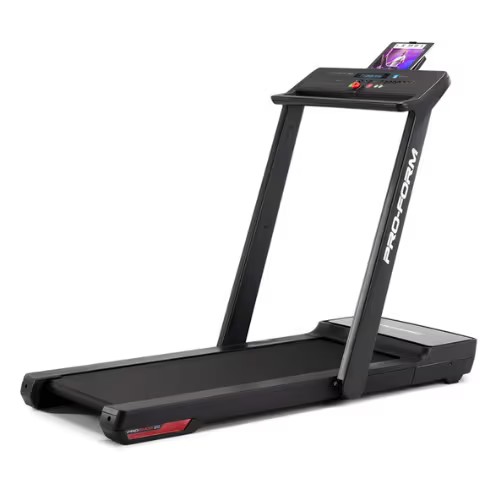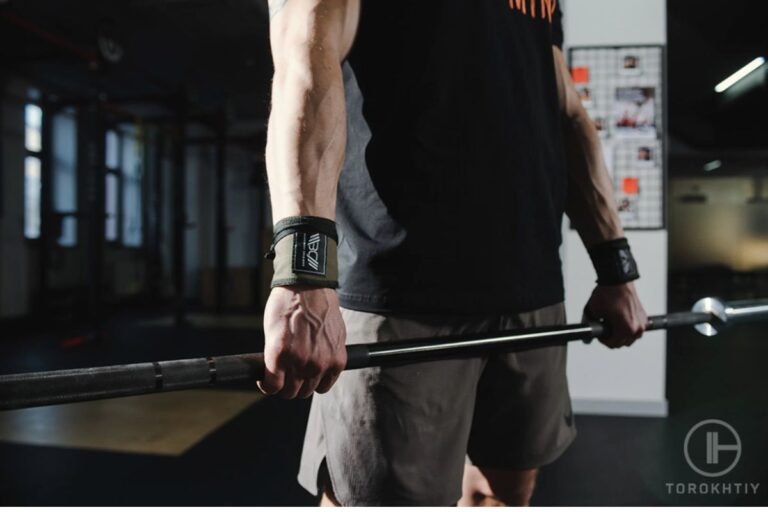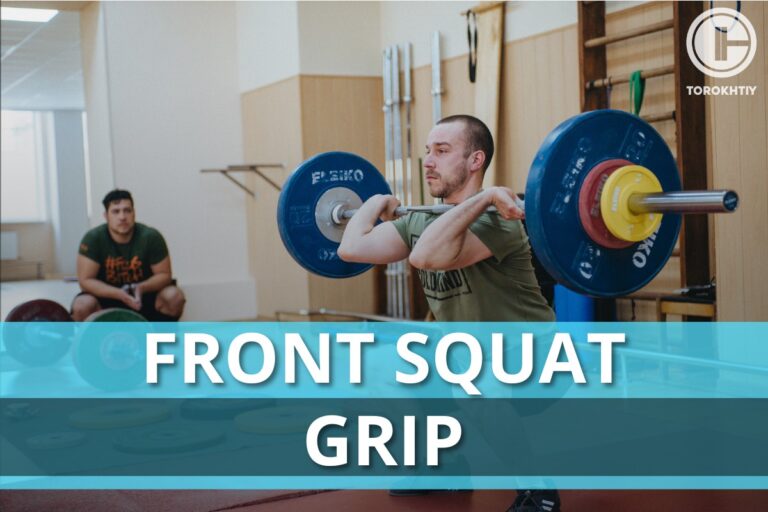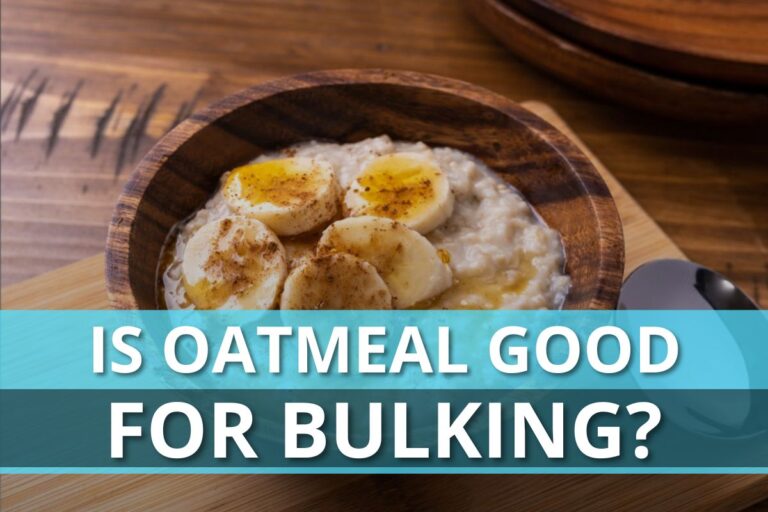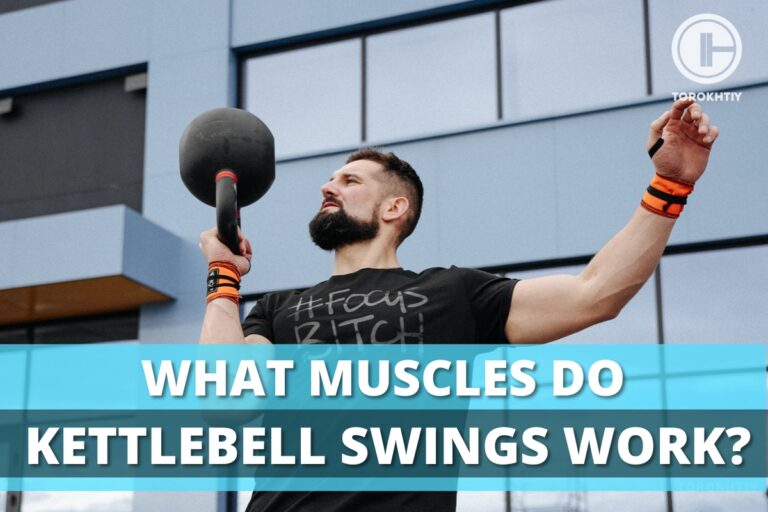Knee Pain From Treadmill: Causes & Prevention
Knee pain from running on a treadmill is a typical problem for many fitness enthusiasts. This pain can be incapacitating, making it difficult to maintain regular workout regimens. In some circumstances, treadmill knee discomfort is caused by an underlying medical issue, whilst in others, it is caused by poor running technique, inadequate training progression or insufficient support from footwear.
Whatever the cause, it is critical to discover effective techniques to treat knee pain to avoid additional injury and return to a healthy activity regimen. In this post, we will explore several practical strategies to relieve treadmill knee discomfort and help you get back on track with your exercise objectives. So, if you are wondering “Is running on a treadmill bad for your knees?”, the answer is no but read on to find out more.
Adjusting the pace and inclination, wearing suitable footwear, keeping perfect form, and combining strength and flexibility exercises are all effective approaches to treating knee pain from treadmill. If the pain persists, it is critical to seek medical treatment and take the appropriate steps to avoid further harm.
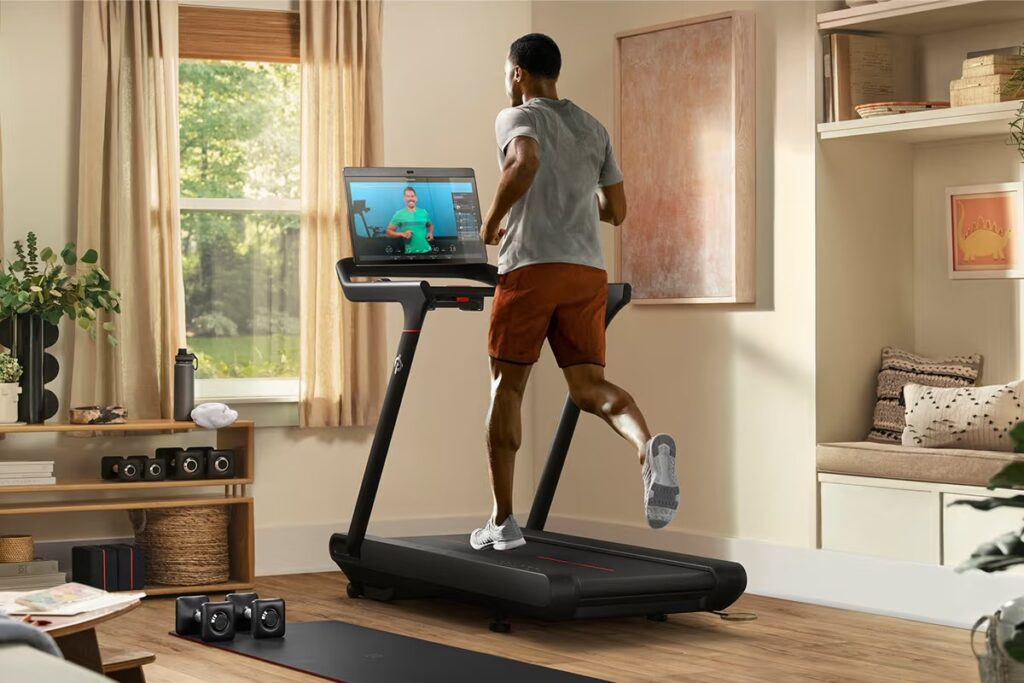
Intro to Knee Pain From Treadmill
Treadmill knee discomfort is a typical complaint among those who regularly exercise.
Runner’s knee – also known as patellofemoral pain syndrome – is an overuse injury that affects as many as 30% of female runners and 25% of male runners. That makes it the most common running-related injury. This can be caused by several variables, including running technique, shoe support, overtraining or underlying medical issues. Overuse or inadequate running training progression is a typical cause of treadmill knee pain. This can be aggravated by jogging on a hard surface or by increased speeds such as a treadmill, which increases the impact on the joints and causes pain.
Improper running technique is another issue that might lead to knee hurts after treadmill use. Poor form, such as sprinting with your knees too close together, your trunk leaning too far forward or landing with an increased heel strike can place additional strain on your knees and cause pain.
Inadequate footwear can increase the risk of knee injuries. The following are five essential qualities of shoes that support a proper running gait:
- Minimum heel-to-toe drop: Shoes with a 6 mm or less are considered “minimal” in this context, referring to the thickness difference between the heel cushion and the toe cushion.
- Neutral: It should not interfere with the stability or motion control elements that are required for normal foot motion during gait.
- Flexibility: A rigid shoe decreases the movement of the foot and ankle increasing the pressure and the working demands in your knees and hips.
- Relatively lightweight: shoes with weights >8 to 10 oz for women and men’s sizes of 8 to 9, respectively.
- Wide toe box: the forefoot of the shoe should allow the runner to wiggle toes
- Cushioning: excessive cushioning permits additional motion of the lower extremity during the stance phase and dampens the proprioceptive feedback, whereas too little cushioning permits extra motion of the lower extremity.
If you feel knee discomfort after jogging on a treadmill, it is critical to address the problem as quickly as possible to avoid additional damage. Seek attention from a medical or healthcare provider like a physical therapist to help you determine and treat the root cause of your knee discomfort.
Rest and ice for a few days can help calm the pain and other symptoms down. Doing some active warm-ups before your run can significantly improve pain and prevent knee pain during a run. Last but not least stretching and having a strengthening program can assist improve joint mobility and strength and minimize the risk of running.
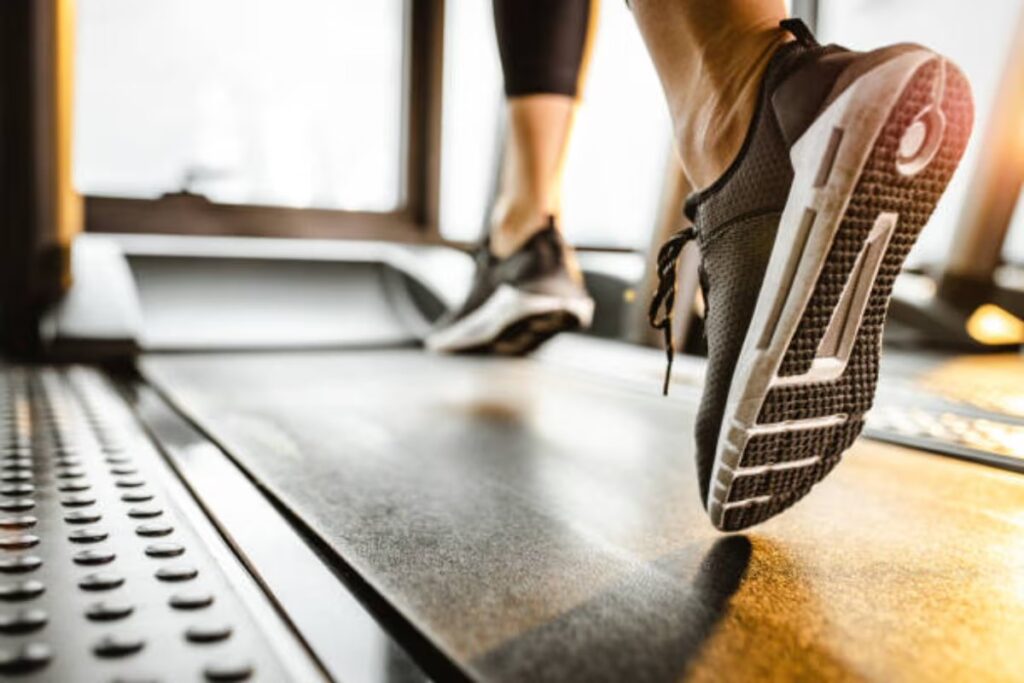
Biomechanics of Treadmill Exercises and How They Can Affect the Knee Joint
1. Impact Forces
The amount of force created when your foot impacts the ground during treadmill activities is referred to as impact force. Running or walking on a treadmill can generate large impact pressures that are absorbed by the knee joint, particularly if adequate running technique and support are not used. These impact pressures can cause joint wear and tear over time, resulting in knee discomfort and damage.
According to one research, impact forces during running might cause greater stress on the knee joint, potentially leading to injury or joint degeneration over time.
2. Foot Strike
The way your foot strikes the treadmill when running or walking is referred to as a foot strike. How you fall on the treadmill might affect your knee joint. Landing on your heels can result in a jarring impact that goes up your leg and into your knee joint, potentially causing knee discomfort and damage over time. Landing on the balls of your feet, on the other hand, might place additional strain on the knee joint.
According to research, runners who fell on their heels experienced much greater loading rates and vertical impact pressures than those who landed on their midfoot or forefoot.
3. Stride Length
The distance traveled by one leg from heel strike to heel strike while jogging or walking on a treadmill is referred to as stride length. As the leg stretches forward and absorbs impact forces, a longer stride length might place extra strain on the knee joint. This can result in greater wear and tear on the joint, which can lead to knee discomfort and damage over time. A shorter stride length, on the other hand, can lessen joint stress and lower the risk of knee discomfort and damage.
According to one research, runners who expanded their stride length experienced higher knee joint loading and greater impact forces than those who kept a lower stride length.
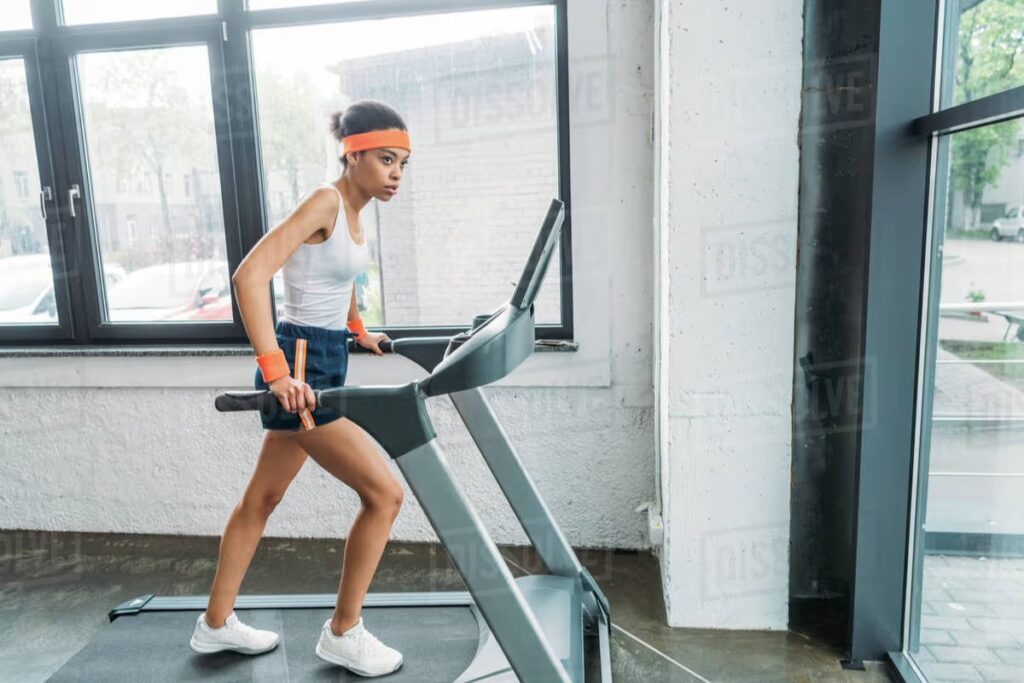
4. Incline
Running on a treadmill at an inclination can greatly increase the burden on the knee joint. This is because jogging on an elevation necessitates more effort and energy to push off and propel the body against gravity, putting greater strain on the knee joint. If the inclination is high, the knee joint has to work much harder to support the body weight, which can result in tiredness and, in severe cases, knee discomfort.
5. Speed
Higher treadmill speeds can increase the impact forces on the knee joint, potentially leading to knee injury if adequate form and support are not maintained. When running at a faster pace, the body produces more ground reaction forces, which are the forces produced when the foot impacts the ground during running. These forces are subsequently passed up the leg and into the knee joint, resulting in joint tension.
How to Prevent Knee Pain from Treadmill?
1. Wear Proper Shoes
It is critical to wear suitable shoes when exercising on a treadmill to reduce knee discomfort. Proper footwear provides cushioning and support, absorbing the impact of each step and reducing stress on the knee joint.
2. Use Proper Form
Running or walking on a treadmill with appropriate form can help lessen the incidence of knee discomfort. Land on the midfoot or forefoot rather than the heel, and maintain the knees slightly bent and in line with the feet.
3. Gradual Running Progressions
Gradually increasing the intensity of treadmill activities can help prevent knee discomfort. Excessive stress on the knee joint might result from rapidly increasing the elevation, pace, or duration of your activity, causing pain and even damage.
4. Stretch Before and After Exercise
Stretching before and after treadmill exercises can enhance joint mobility and lessen the likelihood of knee soreness. Stretching the quadriceps, hamstrings, and calf muscles is very important for knee health.
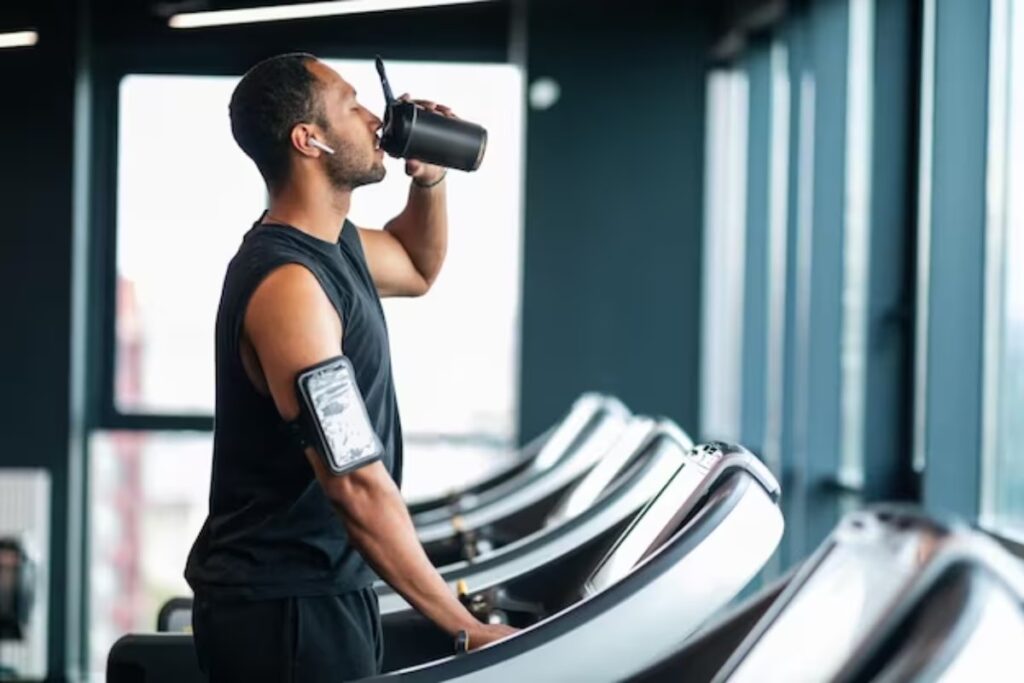
5. Strengthen Your Leg Muscles
Strengthening the muscles surrounding the knee joint can enhance stability and lower the likelihood of knee discomfort. Strengthening exercises such as squats, lunges, and leg presses might be beneficial.
6. Consider Low-Impact Exercise
You can add other types of cardiovascular activities to your training like swimming, hiking, jumping rope, elliptical, cycling and rowing. These other activities will continue to maximize your cardiovascular conditioning while minimizing the overuse of your knees during running.
Treatment of Knee Pain from Treadmill
1. Rest and Ice
Resting and applying ice to your knee can help decrease inflammation and relieve acute discomfort.
2. Modification of Activities
Changing the pace, inclination, distance and surface of where you run could drastically change the symptoms of knees.
3. Physical Therapy
Working with a physical therapist can help you improve your knee mobility, strength, and flexibility, lowering your risk of injury in the future.
4. Pain Relievers
Pain relievers such as ibuprofen or acetaminophen, which are available over the counter, can help control discomfort and decrease inflammation.
5. Knee Braces or Compression Sleeves
Wearing a knee brace or compression sleeve can assist and give support while also reducing stress on the knee joint.
6. Shoe Inserts
Shoe inserts or orthotics can aid in the correction of any foot imbalances or misalignments that may be leading to knee discomfort.
7. Injections
A doctor could offer corticosteroid injections in some circumstances to relieve inflammation and discomfort in the knee joint, but this should not be your first line of treatment.
8. Surgery
In extreme situations, surgery may be required to restore knee joint injury or fix structural abnormalities.
Precautions and Modifications for Treadmill Workouts
1. Warm Up Properly
Warm up appropriately before beginning your treadmill workout by walking at a leisurely pace for 5-10 minutes. This can improve blood flow to the muscles and lower the chance of injury.
2. Start Slow
Start slowly if you’re new to treadmill exercises and progressively raise your pace and intensity over time. This can aid in the prevention of overuse injuries and lower the incidence of knee discomfort.
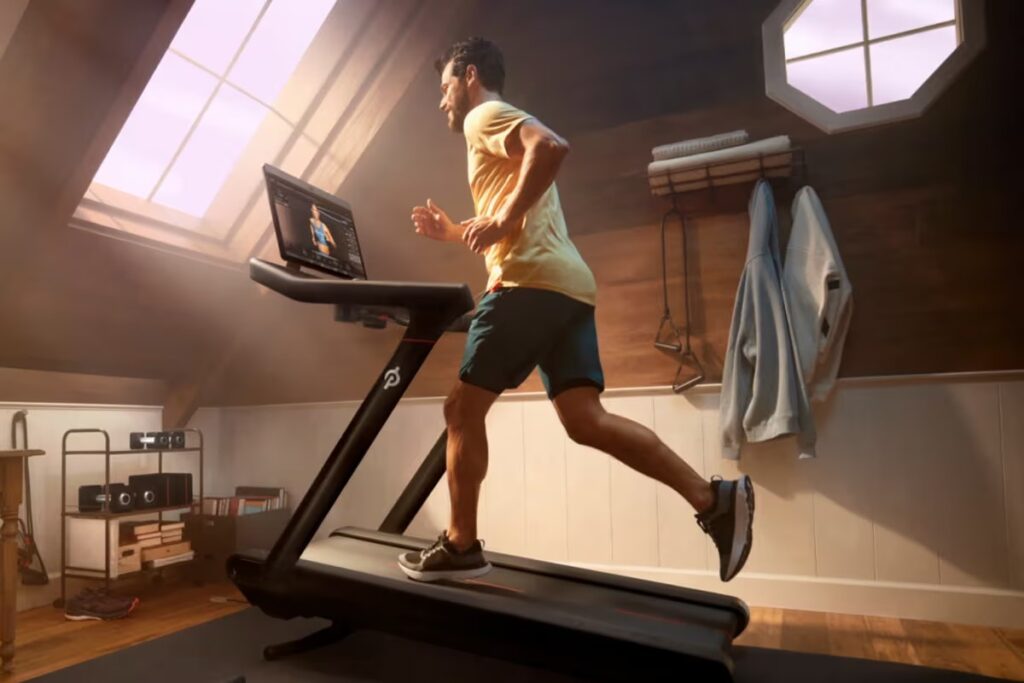
3. Use Proper Form
When running on the treadmill, keep your shoulders relaxed, your head up, and your feet landing beneath your torso. Leaning too far forward or backward might place additional strain on the knee joint.
4. Wear Proper Footwear
To lessen impact pressures on the knee joint, choose footwear with suitable support and cushioning. Wear-out shoes should be replaced as soon as feasible.
5. Adjust the Incline
If you get knee pain when working out on the treadmill, consider lowering the slope. This can assist to minimize the workload on the knee joint and relieve pain.
6. Incorporate Strength Training
Muscle strengthening around the knee joint can help minimize injury risk and enhance joint stability. Consider including squats, lunges, and leg presses in your training program.
7. Cool Down Properly
Cool down after your treadmill workout by walking at a leisurely speed for 5-10 minutes. This can aid with muscular discomfort and injury prevention.
Our Treadmill Recommendation
Even after trying out multiple treadmills, I always felt they were missing something. After years of trial and error, I believe I’ve found the best treadmill on the market. The Pro-Form City L6 is a true game-changer.
It offers heart rate monitoring, preset workouts, and speeds up to 8 mph. But what truly sets this treadmill apart is its easy portability. It only weighs 125 pounds, making it the lightest motorized treadmill on the market and perfect for use at home. The City L6 is compact and foldable, so you can easily stow it away.
What I love about this machine is that even though it’s light in weight, Pro-Form does not compromise on its quality. City L6 has the 1.6 CHP motor installed, which lets you run for miles without heating up or making any noise.
FAQ
Are Treadmills Bad for Your Knees?
Treadmills are not intrinsically harmful to the knees, but incorrect use and form can result in knee discomfort and damage. Impact forces, foot striking, stride length, elevation, pace, and shoe quality can all contribute to knee pain while using a treadmill.
What to Do About Knee Pain When Walking up an Incline?
There are various things you may do if you are experiencing knee pain when walking up an incline. To start your activity, make sure to warm up to promote blood flow to the knee joint. Reduce the elevation or pace of the treadmill to reduce the burden on the knee. Stretching before and after exercise can also aid in the improvement of joint mobility and the reduction of stiffness.
Consultation with a healthcare practitioner or physical therapist may also be effective in determining the source of the knee discomfort and developing an appropriate treatment strategy.
Conclusion
While running on a treadmill is a terrific method to get in shape, if done incorrectly, it can cause knee discomfort. Individuals may assist ease knee discomfort and avoid future damage by following the advice mentioned in this article, such as regulating inclination and pace, wearing suitable footwear, and implementing stretching and strengthening activities.
If your knee discomfort persists, you should listen to your body and seek medical treatment. Please feel free to ask questions and express your comments in the box below. Let’s all work together to maintain our knees healthy and pain-free when running on the treadmill.
Also read:
- Knee Pain When Squatting
- Knee Pain From Lunges
- Knee Pain After Working Out
- Peloton Knee Pain
- Is Jump Rope Bad for Knees
- Knee Pain From Elliptical
References:
- What Are Common Knee Injuries from Running? // Temple Health: https://www.templehealth.org/about/blog/common-knee-injuries-running
- 8 Ways the Wrong Shoes Can Affect Your Knees // The Noyes Knee Institute: https://noyeskneeinstitute.com/8-ways-the-wrong-shoes-can-affect-your-knees/
Why Trust Us?
With over 20 years in Olympic Weightlifting, our team does its best to provide the audience with ultimate support and meet the needs and requirements of advanced athletes and professional lifters, as well as people who strive to open new opportunities and develop their physical capabilities with us.
By trusting the recommendations of our certified experts in coaching, nutrition, dietology, and sports training programming, as well as scientific consultants, and physiotherapists, we provide you with thorough, well-considered, and scientifically proven content. All the information given in the articles concerning workout programming, separate exercises, and athletic performance, in general, is based on verified data. We ensure that you can rely on our professionals’ pieces of advice and recommendations that can be treated as personalized ones which will benefit you and fully meet your needs.
The product testing process is described in more detail here
Author: Ernesto Mendez
Orthopedic Clinical Specialist
Best Results: Snatch – 208 kg,
C&J – 240 kg
Dr. Ernesto Mendez is a licensed physical therapist, a board Orthopedic Clinical Specialist (OCS) and founder of Movement 4 Wellness Physical Therapy, LLC. He earned his degree from Thomas Jefferson University. He is also an Olympic weightlifting coach (USAW L1) and Functional Fitness Level 1 Trainer. His experience includes the areas of pain management, movement analysis, injury recovery, surgical rehab, corrective exercise, and athletic, military, and occupational performance. Dr Mendez is passionate about Olympic weightlifting and fitness. Ernesto Mendez is responsible for designing multiple training programs, writing blog articles, posting daily weightlifting content, doing live weightlifting and mobility seminars.

